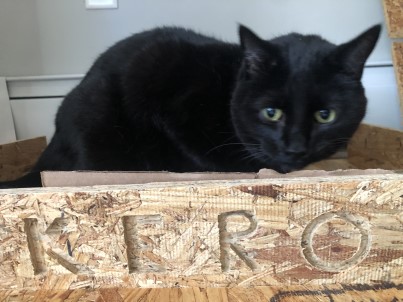Design Something Big
I wanted to construct something useful for this project, and decided to make a tower for my cat, Kerouac (Kero for short). The first step in doing so was to build a 3D model, which was scaled up from prior weeks and converted to inches in order to align with the OSB board measurements. The resulting OnShape design file can be found here.
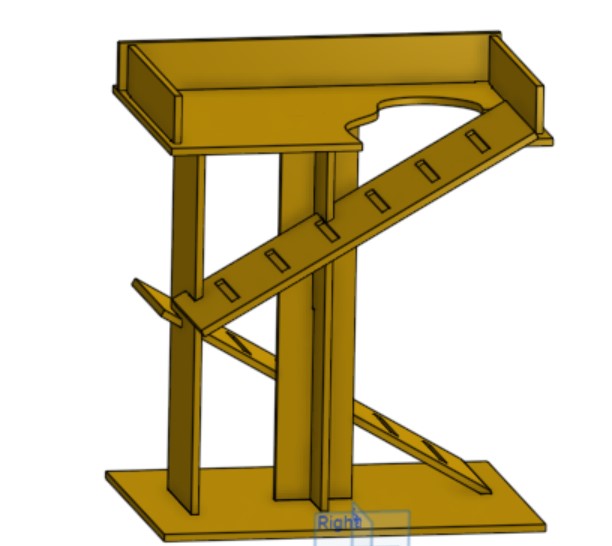
Next, the design pieces had to be laid out flat alongside each other, rearranged into the configuration that would fit within the board, and converted to toolpaths in Aspire. At first, Aspire struggled with toolpaths for the pocket cuts, and generated duplicate vectors that would have completely thrown off the cut. Unfortunately I don't have a photo of this error, but it essentially created a few tangled webs over the pocket cuts. After retracing some of the vectors (many thanks to Nathan and Joon for lending their Rhino expertise here!) we were able to generate the following Aspire file with separate layers for pockets, holes, and part outlines that would guide the ShopBot's cuts.
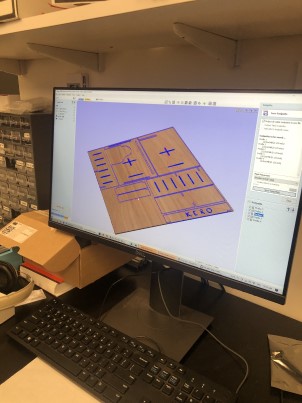
Cut Something Big
With the toolpath file in hand we made our way to the basement to let the ShopBot work its magic. We nailed down the board, accounting for the offset at the edge, checked the speed and origin, and zeroed the machine. The cut took longer than expected, mainly because of the pocket cuts which had to cover a larger surface area than outline cuts, but after about 90 minutes produced pieces which were then easy to extricate and assemble.
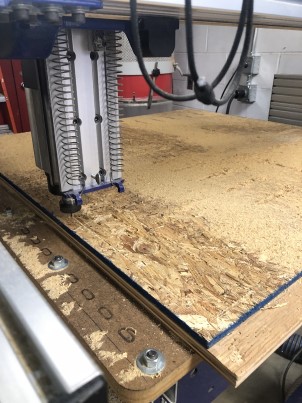
Assemble Something Big
Having given a slight offset of .05 inches, the joints were an excellent fit, and the pockets created to stabilize the center stand and support beam effectively held the vertical parts in place. The only adjustments that had to be made afterward were sanding, cutting the slanted joints with a saw, and adding a bit of cardboard lining to make the top platform more comfortable for Kero (aka the Box Lord, king of cardboard). This allowed the tower to be constructed without fasteners, which also means it can be easily deconstructed and transported later on.
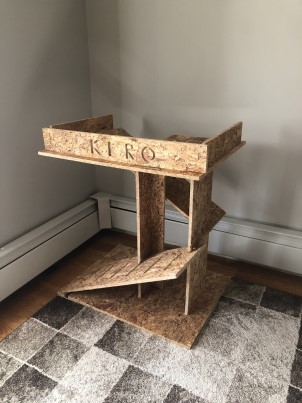
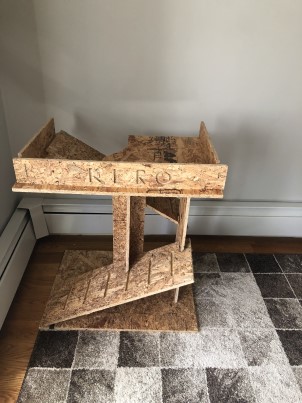
Finally, the tower had to be tested for user adoption. Given the fickle nature of cats, I assumed it had about a 50/50 shot at pleasing the target audience. After some cautious sniffs and one anxious ascension, Kero decided he liked to lay on the platform and scratch the OSB, but was not a fan of the height of the tower. Thus, I moved the upper platform down to the floor, and Kero happily hunkered down there. All in all, a partial success!

